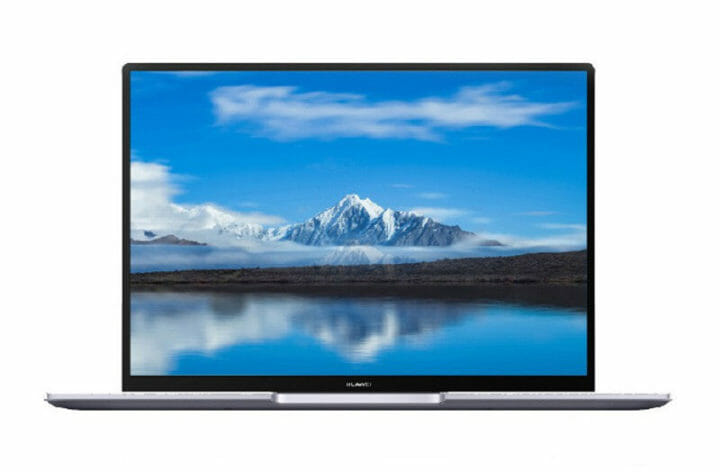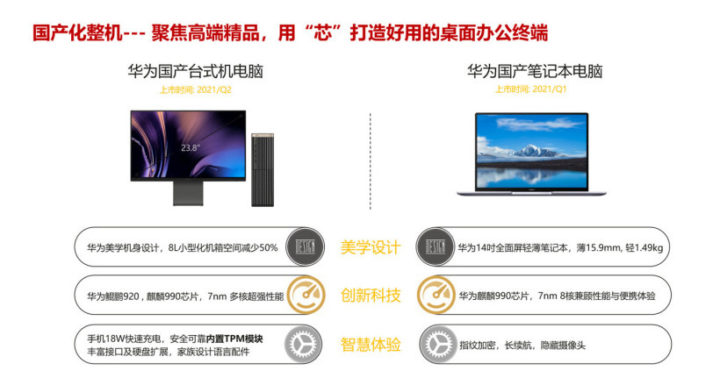While it’s already possible to purchase an Arm Linux laptop like PineBook Pro, the Rockchip RK3399 processor, and 4GB RAM may be limiting to some, especially when wanting to multitask.
But most likely out of necessity, Huawei has unveiled a more powerful Arm Linux laptop with Huawei Qingyun L410 powered by a 7nm Kirin 990 octa-core Cortex A76/A55 processor, coupled with 8GB RAM, up to 512GB of storage, and a 14-inch display.

- SoC – Hisilicon Kirin 990 octa-core processor with 2x Cortex-A76 @ 2.86GHz, 2x Cortex-A76 @ 2.09GHz, 4x Cortex A55 @ 1.86GHz, Arm Mali-G76MP16 @ 700 MHz, DaVinci NPU
- System Memory – 8GB LPDDR4-4266
- Storage – Up to 512 UFS of storage (SSD or UFS 3.0 TBC)
- Display – 14-inch 2K display with a 3:2 aspect ratio
- Camera – “hidden camera”
- Video – 4K 60fps video support
- Misc – Fingerprint sensor
- Dimensions – 15.9mm thick
- Weight – 1.49 kg
The laptop does not ship with Ubuntu, Ubuntu Mate or Debian, or other commonly known Linux distributions but instead Unity OS, aka UOS, based on Deepin Linux, and developed by UnionTech as part of the Chinese government’s push to move away from reliance on Windows. We are also told the laptop will be upgradable to HarmonyOS in the future.
ITHome also showed a screenshot with Huawei desktop PC expected in Q2 2021 with either Kirin 990 mobile processor or a Kunpeng 920 8-core processor. There must have been some delays since the laptop was supposed to become available in Q1 2021, and the desktop PC in Q2.
Huawei Qingyun L410 laptop is already listed on JD.com but without price or much detail at all apart from some basic specs. I suppose the laptop may eventually become available to the rest of the world through Aliexpress or other similar websites.
Via Liliputing and GizmoChina

Jean-Luc started CNX Software in 2010 as a part-time endeavor, before quitting his job as a software engineering manager, and starting to write daily news, and reviews full time later in 2011.
Support CNX Software! Donate via cryptocurrencies, become a Patron on Patreon, or purchase goods on Amazon or Aliexpress





